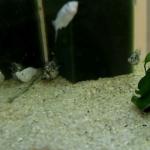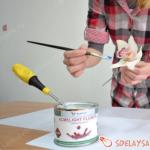Common myrtle: features of cultivation, care and reproduction
Common myrtle is an evergreen shrub with fragrant leaves. Under natural conditions, this culture grows throughout the Mediterranean, where it reaches a height of about 5 meters. The leaves of the myrtle are shiny and leathery, have a pleasant aroma.
There are garden forms of this crop, which mainly differ in the color and shape of the leaves. But all of them are quite thermophilic, therefore, it is possible to grow them in open ground conditions only in regions with a warm climate. As a houseplant, only ordinary myrtle is used.
This plant is characterized by small, shiny leathery leaves, which, when rubbed in the hand, smell pleasant. In room conditions, you can carry out their artificial pollination. As a result, fruits with seeds will be tied, which can be used for reproduction.

Optimal conditions for growing indoors
Myrtle is a rather demanding plant. Growing it indoors is quite difficult, as it requires high humidity. To help the plant cope with this problem, you can use the following methods:
- Spray the air around the plant with a fine spray bottle.
- Put wet moss in the tray with the flowerpot.
- Place a container of water next to the pot.
- Also, during the period of intensive growth from March to September, the plant must be regularly and plentifully watered.

Temperature
Myrtle is a plant for cool rooms. The temperature of its content in winter should be only + 5-6 ° С. At higher rates, it is quite difficult to keep the plant until spring. Very often, from the warm and dry room air, leaves begin to fall off. This process does not always lead to the death of the plant, but you can not expect flowers from such a myrtle.
Growing myrtle ordinary (video)
Lighting
Throughout the year, myrtle requires a large amount of bright sunlight. In the summer, it can even be taken out into the open air or a balcony, but there it should be shaded at noon. With a constant content of myrtle in conditions of insufficient illumination, it does not have a flowering period, even if the optimal temperature regime is observed in winter.
Common myrtle: popular indoor flower varieties
In indoor floriculture, the following varieties of ordinary myrtle are most widely used:
|
Name |
Plant height, cm |
Leaf color and size |
Flower shape |
fruit coloring |
|
Alhambra |
small, green |
|||
|
Flore Pleno |
small, green |
Terry |
||
|
Variegata |
Small, colorful |
|||
|
small, green |
purple |
|||
|
La Claype blanc |
small, green |
|||
|
Microfill |
Very small, green |
|||
|
Tarentina |
small, green |
|||
|
Tarentina Variegata |
Small, colorful |
|||
|
large, green |
All varieties of myrtle presented in the table can be quite successfully grown in the house.
How to propagate a house plant
Myrtle can be propagated in two main ways: seed and vegetative. When sowing seeds, the varietal characteristics of the plant are only partially preserved, so if you want to propagate a variegated variety or a variety with double flowers, it is better to use cuttings.
To propagate myrtle using cuttings, you must follow the following procedure:
- Cut off the stalk from the lateral shoot that has not yet bloomed. Its length should be no more than 10 cm.
- Remove the lower leaves from the cutting.
- Treat the cut with a root formation stimulator.
- Plant the resulting cuttings in a moist loose substrate and cover with a plastic bag.
Under all conditions, after 1 month, the cuttings should take root. After the root system develops well enough, they are transplanted into separate containers. Further care for them is carried out in the same way as for adult plants.
When propagating myrtle by seed, the following procedure should be followed:
- Prepare a container for sowing with a loose and fertile substrate.
- Moisten the substrate evenly with a spray bottle.
- Spread the seeds over the surface of the soil and sprinkle lightly.
- Cover the seed container with plastic wrap.
During germination, the temperature should be maintained at a level of 18-20 ° C, it is also necessary to monitor the humidity of the substrate and, if necessary, carefully water it. Seed germination time is usually from one week to 10 days.
After the seedlings develop a second pair of true leaves, you can start picking them into separate containers. Further care for them consists in regular watering, loosening and top dressing.
How common myrtle breeds (video)
Caring for ordinary myrtle in the house
Caring for myrtle is not particularly difficult, and its compact size allows you to place a flowerpot with a plant in any convenient place.
Requirements for soil and flowerpot
The soil for growing myrtle can be made independently from equal parts of soddy land, sand and humus. If this is not possible, you can use the usual universal substrate for growing indoor plants, the main thing is that it has a slightly acidic reaction.
When choosing a flowerpot for growing myrtle, remember that its size should be larger than the size of the horse system. Otherwise, the soil that has not been mastered by the roots can turn sour and cause the death of the plant.

Watering and feeding
For watering myrtle, you need to use only settled water at room temperature. The use of cold or hard water is unacceptable. Also in winter, the frequency and intensity of watering should be reduced. But in no case should the substrate be completely dried in a pot, otherwise the plant will completely shed its leaves or even die.
For home myrtle, the bay is very harmful. Excess moisture will very quickly lead to the emergence of various rot and fungal diseases. To prevent this from happening, excess water from the pan must be drained, and drainage must be provided at the bottom of the pot.
In order for the myrtle to develop well during the period of intensive growth, it must be fed. To do this, you can use any universal fertilizer for decorative leafy indoor flowers. Bred it according to the attached instructions.
In winter, the myrtle has a pronounced dormant period., so there is no need to feed him at this time.
crown formation
In order for the myrtle to have a beautiful and well-groomed crown, it must be formed in a timely manner. To do this, you can use spring pruning, which allows you to save the plant from elongated and weak shoots or pinching the apical points of growth.
Pinching can be carried out throughout the entire period of intensive growth. It allows the plant to form a dense and well-leafed crown.
Transplant rules and terms
It is necessary to transplant young specimens of myrtle annually, adults are enough once every 2-3 years. All transplant work is best planned for the spring.

Potential Growing Problems
Myrtle, like any other indoor crop, if the growing conditions are not observed, can be affected by pests. Most often on it you can find the following types:
- Aphid. Small insects that, depending on the species, may be green or gray in color. It feeds on the juice of the plant, which leads to damage to the leaves and their drying. Fighting aphids is pretty easy. To destroy it, you can use a solution of laundry soap or any insecticidal preparation. In most cases, a single treatment is sufficient to completely destroy aphids.
- Shchitovka- a pest that feeds on plant sap. If the pest is too large on the leaves of the plant, you can see its clusters in the form of black spots. Systemic insecticides are used for destruction.
- . Most often appears when growing myrtle in conditions of high temperature and low humidity. To combat it, you need to use special acaricidal preparations that have a long period of protective action. For example, you can use Actellik or Fitoverm.
How to form a crown at an ordinary myrtle (video)
Growing myrtle on your own at room conditions is not so difficult as it seems at first glance. You just need to observe agricultural technology and take care of the plant in a timely manner.




